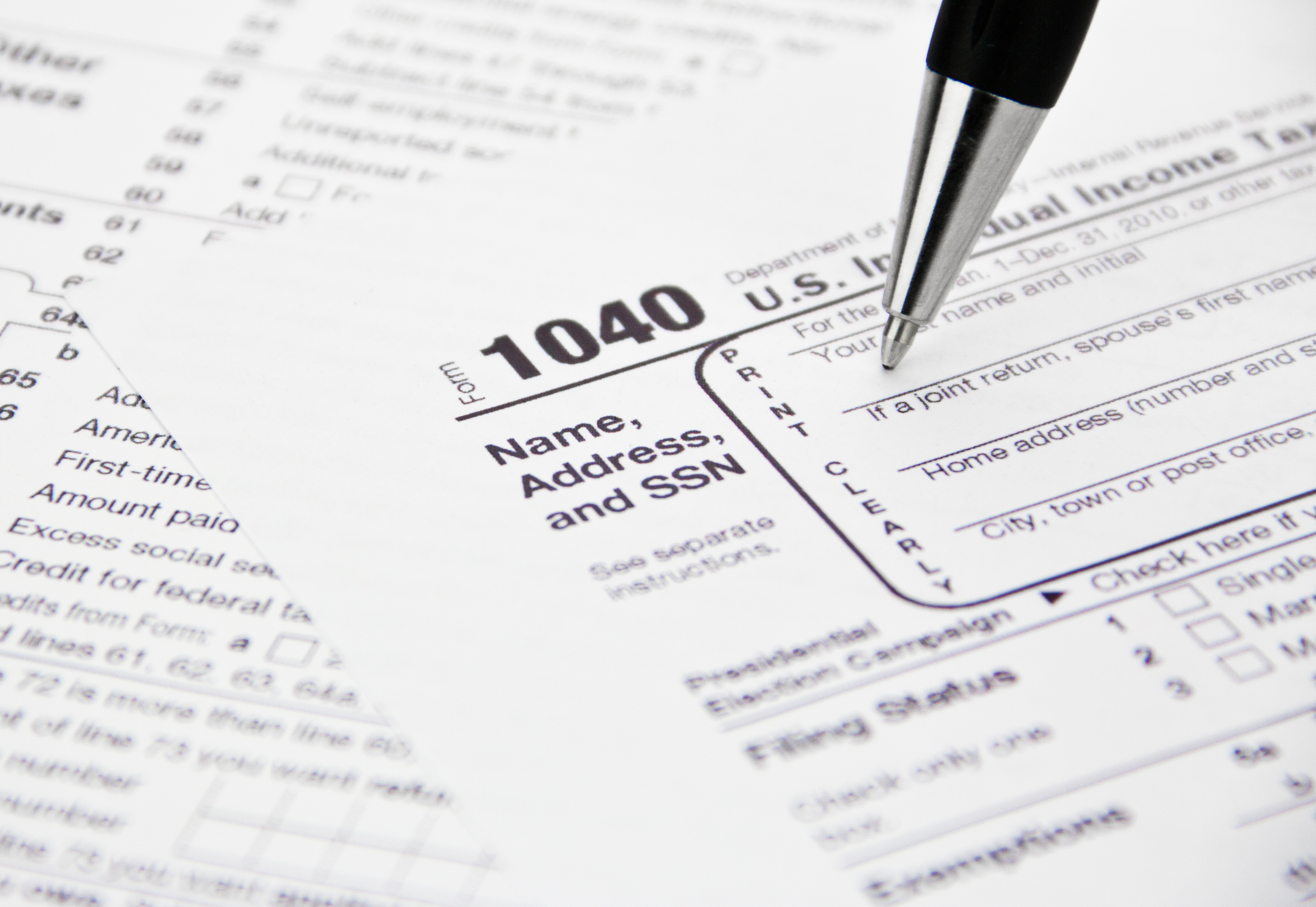
Of all the forms involved in filing your tax return, tax form 1040 might just be one of the most important. This form is one of a few that helps you file your annual federal taxes, and it’s from this form you’ll find out if you need to acquire and submit any others. As with all tax forms, it can be confusing and sometimes hard to understand. A tax preparer will be able to walk you through the process step by step in the event that you feel you need some further assistance understanding your taxes.
Tax form 1040 can be used on its own, but if you’ve got itemized deductibles outside of the standard deduction, you’re probably going to have to attach some other forms or schedules to complete your return. The primary function of the 1040 is to determine how much taxable income you’ve received over the tax year and figure out whether or not you’ll receive a refund or if you’ll need to pay back to the IRS. The first page of the 1040 will help calculate your Adjusted Gross Income (AGI).
The top section, and box 1 through 5.
This is your personal information, including your name, address, and social security number. If you’re married filing jointly, your spouse’s information also goes here. Box one through five is where you decide how you’re going to file. What you select will determine how much you are eligible for when it comes to the standardized deduction.
Box 6 - your exemptions.
This section is for your spouse (if you’re filing jointly) and any dependents you are claiming on your return. Keep in mind that your dependents must fall under the qualifying dependents regulations. They can be your children, adoptive or biological, or even qualifying relatives. Just remember though, if someone else is claiming someone on their tax return, you cannot.
Box 7 through 22 – Income from wages, salaries etc.
Here is where you’ll claim all of your income from wages, salaries, tips, pension plans, IRAs, social security payments, and so on. These boxes are straightforward in that they ask you specifically if you received that type of income. If you didn’t, just fill in a zero. If the kind of income you received was not listed in these sections? Don’t worry, box 21 allows you to enter “Other Income” which is anything that doesn’t fall under the previous categories can be entered here.
Calculating your Adjusted Gross Income, box 23 through 37.
Follow the instructions regarding IRA interest, student loans, alimony, tuitions and fees and a few other expenses of note, and subtract those from your claimed income from box 22. This leaves you with your Adjusted Gross Income, and depending on what that number is will have an impact on what kind of deductions you can make later on.
Box 38 through 56 – Your taxes and credits.
This is the spot you decide whether you’re taking your standardized deduction or itemized. If you go with the itemized deduction option, you’ll need to attach a completed Schedule A form. If you’re unsure of what a Schedule A is all about, or you think you might need help understanding what you can or can’t itemize, find a tax preparer or accountant to assist you in this step of your tax filing journey. Once you come to the amount you’re able to deduct from your taxable income, whether it’s the standard deduction or a long list of itemized expenses, you’ll be able to look into whether or not you are eligible for any tax credits. Included in these credits are a child credit, residential energy credits, and educational credits to name a few. These credits are applied to your taxes owed.
Box 57 through 63 – Other taxes owed.
If you’re self-employed or have unreported Medicare or social security tax, or even if you have individual responsibility health insurance, you’ll add these up and then add them to the number in box 56. This is going to be your total tax.
What you’ve already paid and a few other credits– Box 64 through 74.
These boxes are for taxes or payments you’ve already paid or made to the IRS over the course of the tax year. Whether they were automatically deducted from your paycheck, you paid them quarterly, there are a few different ways you may have already paid your federal taxes throughout the year. Also, this is where things like the Earned Income Credit (EIC) or the American Opportunity Credit are going to be applied.
Box 75 through 79 – You either get money back, or you owe.
It’s almost impossible to get the numbers just right, but in a perfect world, your tax refund would be zero. This would mean you paid the exact amount of taxes throughout the year that you were going to owe the IRS. If you’re going to get a refund though, box 75 through 77 will let you know how much, whereas if you’re going to owe money, 78 and 79 will tell you the damage.
There are also a few different 1040 forms, including the 1040e, and 1040ez to pick from. These refer to ease and filing method, but they’re all a little bit different. If you think filling out the 1040 or one of its multiple variants is going to bring up more questions than answers for you, you can find a tax professional for tax form 1040 here at M-E Accounting & Tax Services, Inc. Just click the link below to get in touch with us right away and we can help with all of your tax and accounting needs!
|
|
